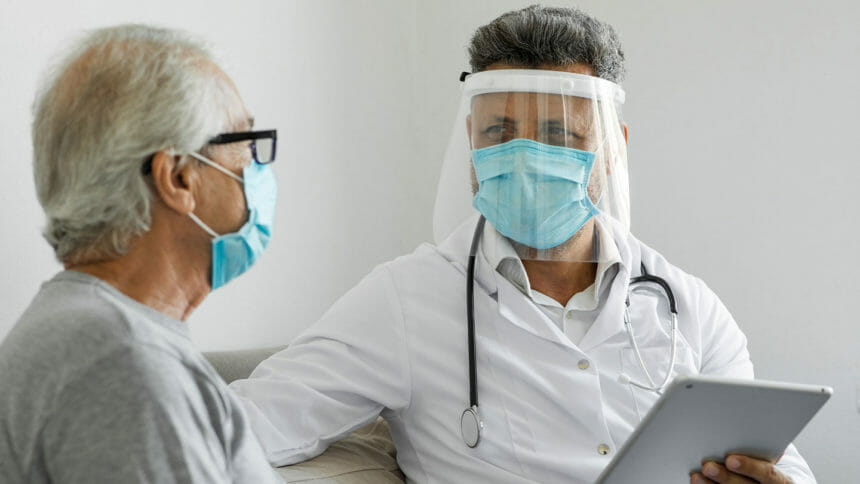
Editor’s Note: This story’s headline has been edited and content added to more accurately reflect the latest CDC changes.
The Centers for Disease Control and Prevention has published updated infection prevention and control guidance for nursing homes. The revisions address the increased infection risks associated with the SARS-CoV-2 omicron gene variant, the agency said.
CDC Medical Officer Kara Jacobs Slifka, M.D., of the Division of Healthcare Quality Promotion, highlighted key changes regarding testing, isolation, quarantine, visitation and source control on Wednesday:
Testing:
The guidance on testing asymptomatic residents with close contact exposure now has been expanded to include newly admitted residents and residents who have left the facility for 24 hours. These recommendations are similar to those for healthcare personnel, Jacobs Slifka noted.
Isolation:
New recommendations now include a 10-day isolation period for residents who are infected with SARS-CoV-2 and who are either asymptomatic or who have had mild-to-moderate illness, and who are not moderately to severely immunocompromised.
In these cases, there is no option given to shorten the duration of isolation with a negative test. This differs from guidance for healthcare personnel, who do have a recommended option to shorten the isolation period, Jacobs Slifka said.
The American Association of Post-Acute Care Nursing explained nuances of the new rule in an email to its members Thursday. AAPACN said for patients with severe to critical illness “who are not moderately to severely immunocompromised,” providers must manage with recommended precautions until at least 10 days and up to 20 days after symptoms first appear.
For symptomatic and asymptomatic patients who are moderately to severely immunocompromised, providers should use a test-based strategy and consult with an infectious disease specialist or other expert to determine when they can be released from isolation.
Quarantine:
The following quarantine recommendations are very similar to those for healthcare personnel, Jacobs Slifka noted.
For residents who are not up-to-date with vaccines:

Residents who have had a close contact exposure should be placed in quarantine even if viral testing is negative. They should be cared for by healthcare personnel using full personal protective equipment.
These residents can be removed from transmission-based precautions after day 10 if they haven’t developed any symptoms, or after day seven with no symptoms and a negative test result within 48 hours.
For residents who are up-to-date with vaccines:
Residents who have had a close contact exposure do not need to be quarantined if they are up-to-date with all recommended doses or have recovered from infection in the past nine days. But they should have a series of viral tests and they do need to wear source control, Jacobs Slifka added.
Visitors:
Visitors should not visit if they have not met the same criteria used to discontinue isolation and quarantine for residents — even if they have met the community criteria to discontinue isolation or quarantine, Jacobs Slifka said. They also should not visit if they have symptoms, have had a close exposure with an infected person, or have had a positive viral test, among other infection risk factors.
If the visit cannot be postponed, the visitor may need to be asked to take additional precautions, Jacobs Slifka added.
Source control:
CDC continues to recommend the use of source control when caring for residents who are known or suspected to be infected with SARS-CoV-2.
The new guidance states that for counties that have substantial-to-high community transmission, a NIOSH-approved N95 or equivalent or higher-level respirator is also recommended when caring for residents not known or suspected to have SARS-CoV-2 infections in certain higher risk situations. These may include providing care for a resident who is not up-to-date with vaccinations, or in poorly ventilated areas, for example.
The full revisions can be found in the following documents:



